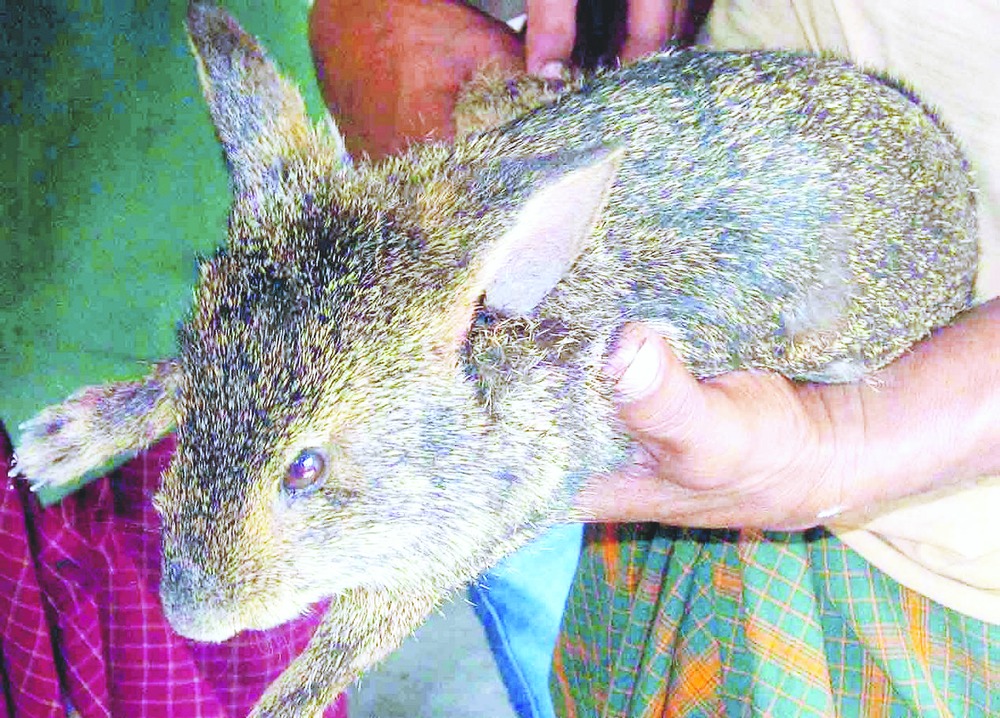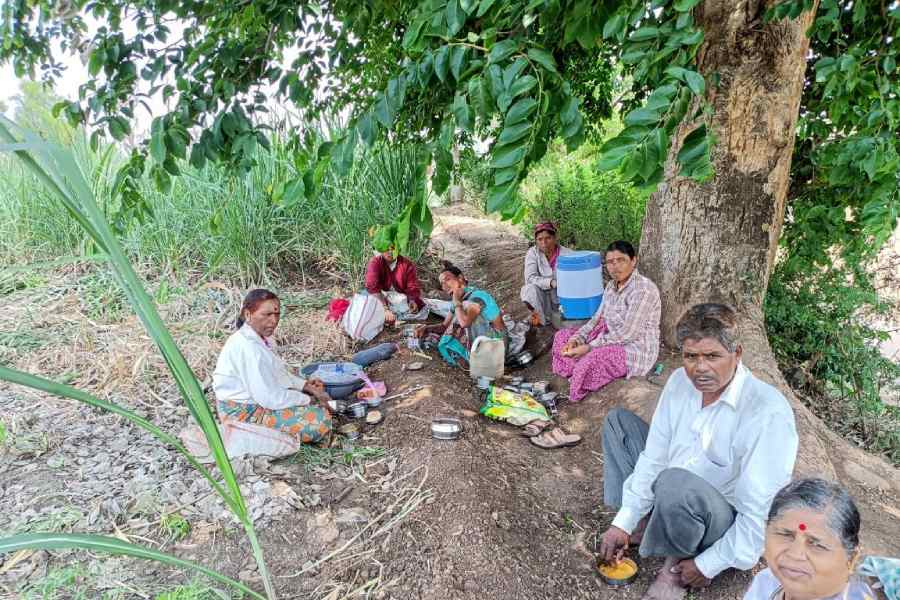
Guwahati, Jan. 1: The future of the hispid hare, which has its highest population density at Manas National Park, is grim if threats to the rabbit are not addressed.
A detailed assessment of the hispid hare ( Caprolagus hispidus), done in Manas, which has now been published in the latest issue of Journal of Threatened Taxa says that habitat loss due to overgrazing, unsustainable thatch harvesting, burning of grassland, weed invasion, encroachment and hunting that are the key threats to the species must be addressed to ensure its survival. "The future is grim if we do not address the threats," Naba K. Nath, the programme co-ordinator at State Resource Centre who had done research on human-elephant conflict in Manas National Park, told The Telegraph.
The other co-author is Kamal Machary of Aaranyak.
Locally known as Khagorikota xoha, this relatively small mammal, which apparently lacks the appeal that some of their larger kin command, are of critical importance in the world ecosystems.
The species was thought to be extinct until it was rediscovered in 1971 at the Barnadi wildlife sanctuary.
The hispid hare is known to exist only in a few isolated pockets across its grassland habitats in India and Nepal.
Twenty grassland patches, within a survey area of 2.65 hectares, were selected to determine the presence/absence of the hispid hare by recording pellets and other indirect evidence. The presence of the hare was recorded in 17 grassland patches.
The paper said the population density of the hare had been estimated at 381.55 individuals/per square km, which, in comparison with other studies in India and Nepal, indicated that Manas National Park currently holds the highest density of hispid hares. Hispid hares need cover for breeding and to protect against predators, and removal of tall grasses for thatch substantially reduces available cover.
The annual dry season burning of grasslands is another key threat to the hare, as its breeding coincides with the burning season.
"During our field survey we also recovered hunting snares set by the people from villages dominated by the Bodo community, which traditionally hunt wild animals for meat. While we have no specific information, it is highly likely that the hispid hare are being hunted," Nath said in the paper.
A proper land-use plan is required to check further encroachment, together with eco-development initiatives to improve the livelihood of local people, awareness/education programmes to promote sustainable utilisation of natural resources, and active involvement of the local residents in conservation activities. "These initiatives will substantially reduce anthropogenic pressures in Manas and help to ensure the survival of the hispid hare in the area," the paper said.










